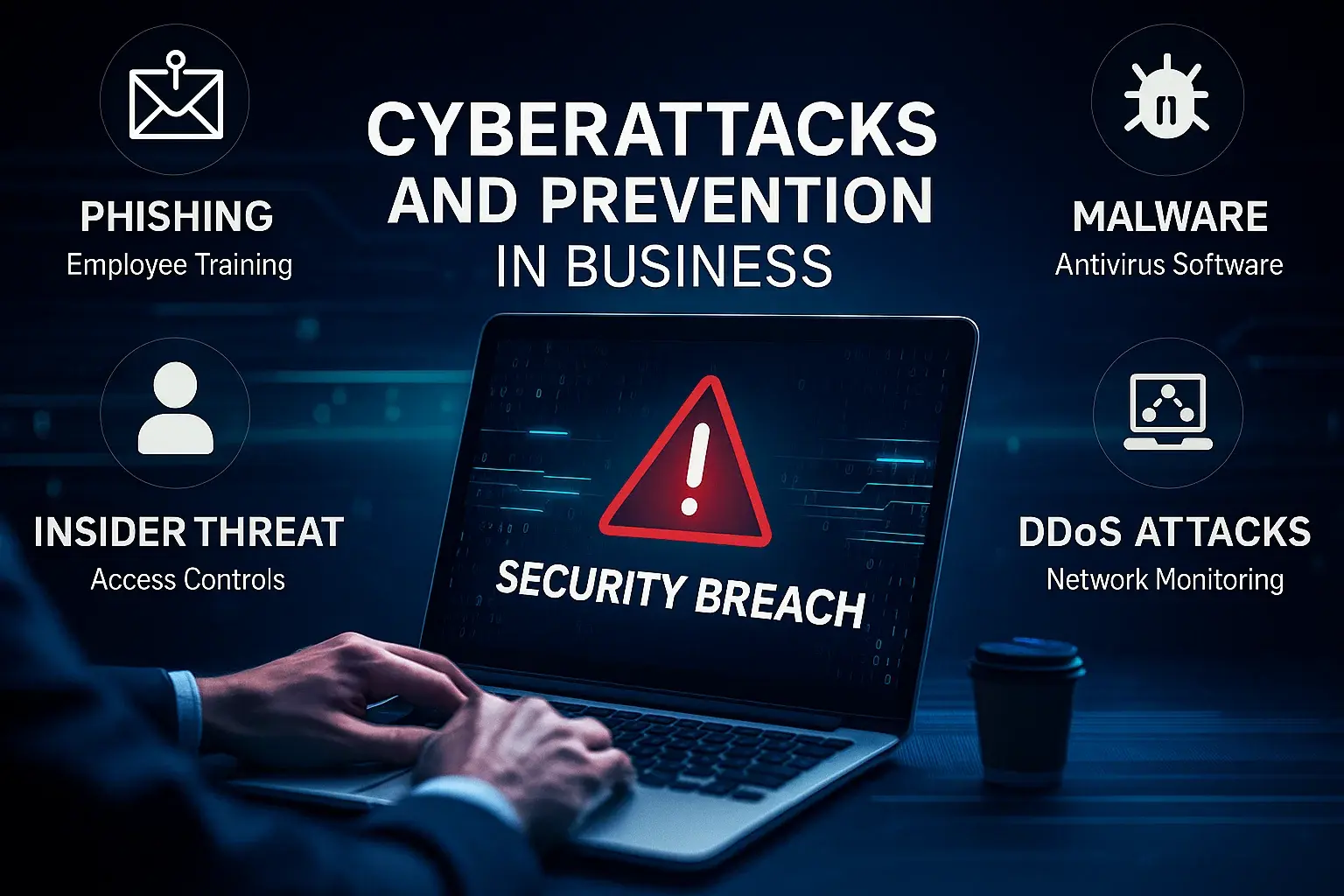Every day, thousands of companies around the world fall victim to cyberattacks. Some realize it immediately; others take weeks or even months to notice their systems have been compromised. The worrying part is that most of these attacks could have been prevented with simple security practices.
At TecnetOne, we know that cybersecurity isn’t just about technology—it’s about awareness and good habits. That’s why, in this article, we’ll explain the most common types of cyberattacks against businesses and share practical tips to prevent them, without needing to be a tech expert.
Phishing: The Most Common Trap
Phishing is one of the most frequent and effective attacks. It involves fake emails, messages, or websites designed to impersonate legitimate companies to trick you into revealing sensitive information like passwords or banking details.
These messages often use urgency (“Your account will be suspended,” “Confirm your information now”) and links that redirect you to fake websites.
How to prevent it
- Check the sender’s address, not just the display name.
- Hover over links before clicking to verify where they lead.
- Never share passwords or personal data via email.
- Train your employees to recognize phishing signs.
At TecnetOne, we recommend phishing simulations to test and strengthen your team’s cybersecurity awareness.
Ransomware: The Digital Kidnapping
Ransomware is malware that encrypts your files and demands payment (a ransom) to restore access. In many cases, even paying doesn’t guarantee recovery.
This type of attack can completely paralyze a business, damage its reputation, and lead to serious financial losses.
How to prevent it
- Back up your data regularly and store copies offline or in secure environments.
- Keep all systems up to date, including software and antivirus tools.
- Avoid downloading files or software from unverified sources.
- Restrict user privileges so only authorized personnel can install software or access critical systems.
Similar titles: Lethal Hacker Alliance: ShinyHunters and Scattered Spider Strike
Social Engineering Attacks
Social engineering relies less on technology and more on manipulating people. Attackers pose as coworkers, vendors, or even authorities to trick you into revealing information or granting access.
They may call, text, or email pretending to need urgent help—counting on your willingness to respond quickly.
How to prevent it
- Always verify identities before sharing information.
- Be wary of urgency—attackers use it to push mistakes.
- Train your staff to recognize manipulation tactics.
- Establish official communication channels to avoid confusion and fraud.
Denial-of-Service (DDoS) Attacks
In a DDoS (Distributed Denial of Service) attack, hackers flood your servers with massive amounts of traffic, causing systems to slow down or crash. These attacks can disrupt your website, apps, or other critical services.
While DDoS attacks may not always steal data, they can disrupt operations and damage your reputation.
How to prevent it
- Use DDoS mitigation services that identify and block unusual traffic.
- Implement monitoring tools to detect spikes or anomalies.
- Distribute resources (like servers) to minimize vulnerabilities.
Malware and Viruses
Malware includes viruses, trojans, spyware, and other malicious software designed to damage systems or steal information. It can enter through downloads, infected websites, USB devices, or emails.
Once installed, malware can log keystrokes, spy on users, or send data to attackers.
How to prevent it
- Install and update antivirus and antimalware tools.
- Avoid connecting unknown external devices.
- Download only from trusted and verified sources.
- Implement security policies that block unauthorized installations.
Identity Spoofing
In spoofing attacks, hackers impersonate trusted sources—such as internal emails or legitimate websites—to deceive users and gain access.
For instance, they might fake your boss’s or a vendor’s email address to request a payment or access credentials.
How to prevent it
- Double-check email addresses, even those that look internal.
- Use multi-factor authentication (MFA) for extra protection.
- Implement SPF, DKIM, and DMARC to secure your company’s email domain.
- Train employees to verify identity before taking action on requests.
Credential Theft
Credential theft happens when attackers obtain usernames and passwords—often through phishing, malware, or leaked databases.
With these credentials, they can log into your systems, send emails on your behalf, or steal sensitive data.
How to prevent it
- Use strong, unique passwords and change them periodically.
- Avoid reusing passwords across platforms.
- Enable multi-factor authentication (MFA).
- Monitor for unusual logins or access attempts.
Insider Threats
Not all attacks come from outside. Sometimes, a disgruntled employee or contractor with authorized access intentionally causes harm or leaks information.
These cases are especially dangerous because insiders already understand your systems and security gaps.
How to prevent it
- Set clear access levels based on employee roles.
- Revoke access immediately when someone leaves the company.
- Monitor internal network activity for unusual behavior.
- Foster a culture of trust and responsibility to reduce insider risks.
Learn more: Should You Pay Ransom After a Cyberattack? What You Need to Know
The Importance of Awareness
No technical measure will be enough if your people aren’t aware of the risks. Most successful attacks start with a human mistake—a careless click, a weak password, or a suspicious email ignored.
That’s why at TecnetOne, we emphasize ongoing awareness and training as the foundation of every cybersecurity strategy. Teaching your team to spot and respond to threats is as important as having firewalls or antivirus software.
In Summary
Cyberattacks keep evolving, but they all share one thing in common: they exploit distraction, misinformation, or lack of prevention.
At TecnetOne, we believe the best defense combines technology, awareness, and quick response. With clear policies, active monitoring, and informed employees, you can drastically reduce your company’s exposure to cyber risks.
Don’t wait to become a headline because of a data breach—prevention is your smartest investment.


